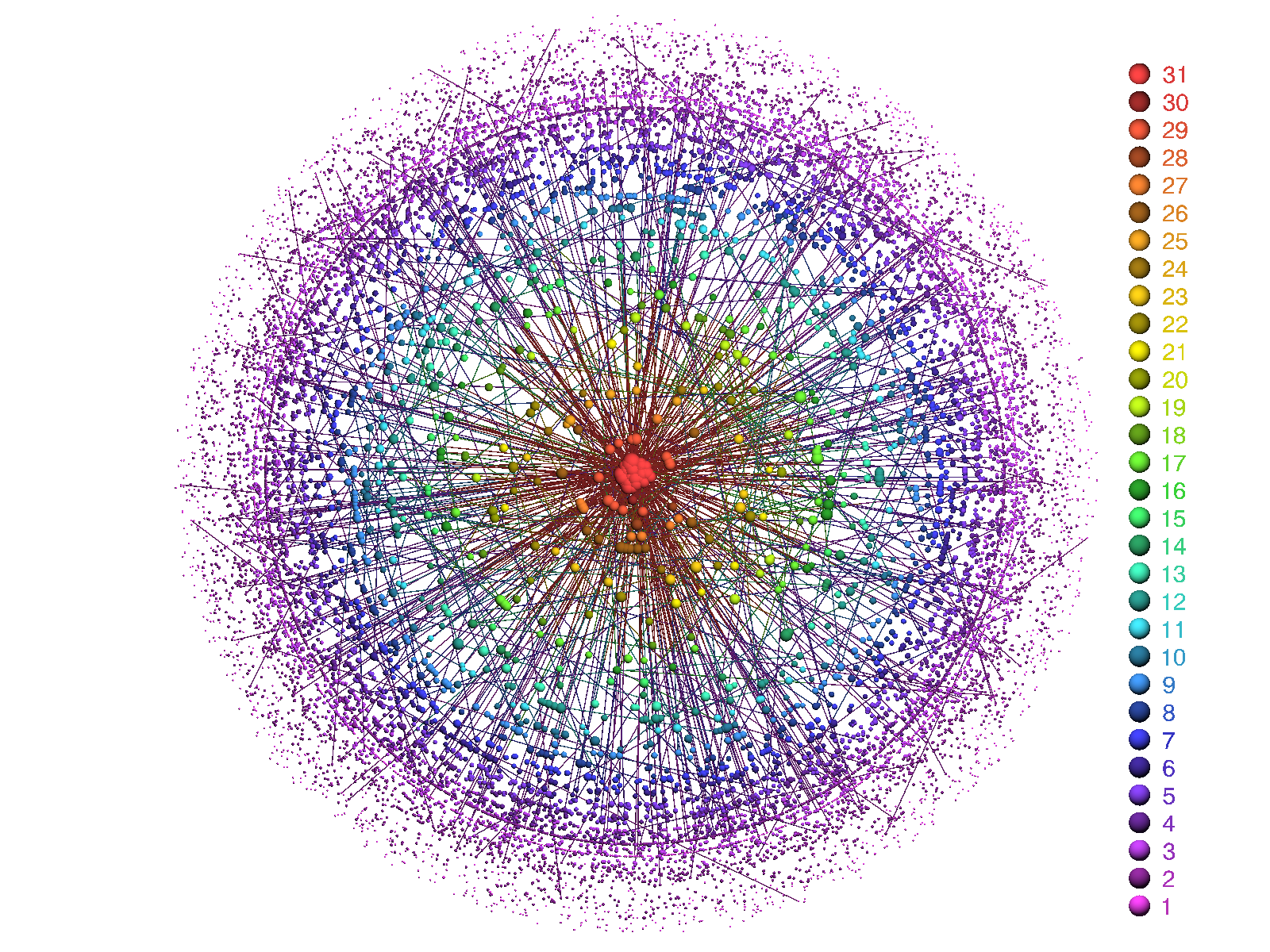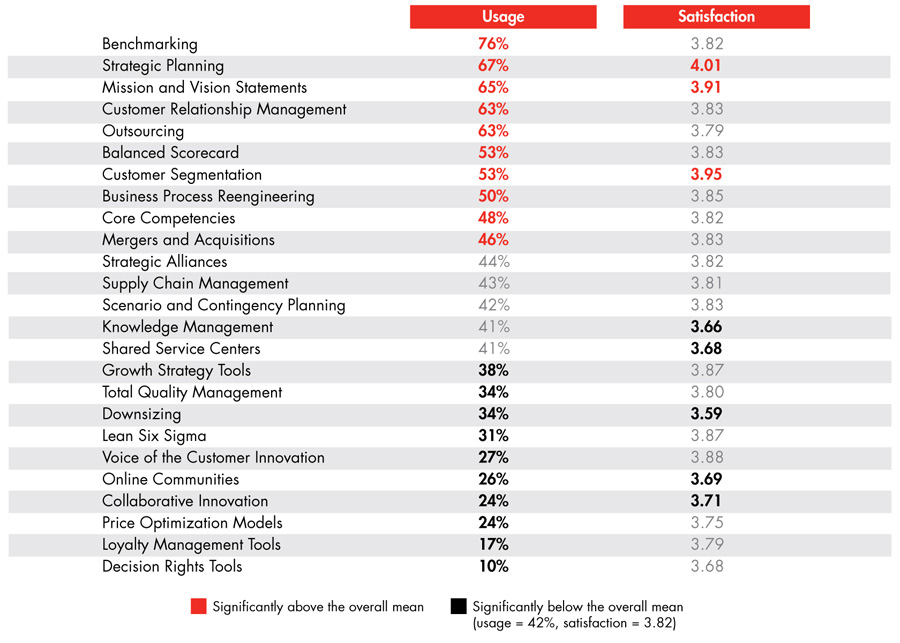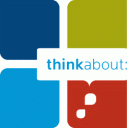November 7th, 2010
 The new view in cognitive science claims we operate in two mental modes – deliberate and automatic. In automatic mode we are unconsciously reacting to the environment around us. This is not simple stimulus to response. We still “think” in between and even make complex decisions but we do so very fast using whatever information is immediately available exercising no conscious control. The so-called blink. In deliberate mode we consciously observe, plan, analyze and control our thoughts, emotions and behaviors. We are reflective. Operating in deliberate mode is HIGH load because it requires tremendous mental energy whereas operating in automatic mode is LOW load because it requires little mental energy. For example, experienced drivers operate vehicles in LOW or automatic mode and a student driver is in HIGH or deliberate mode. One is skilled the other is reflective.
The new view in cognitive science claims we operate in two mental modes – deliberate and automatic. In automatic mode we are unconsciously reacting to the environment around us. This is not simple stimulus to response. We still “think” in between and even make complex decisions but we do so very fast using whatever information is immediately available exercising no conscious control. The so-called blink. In deliberate mode we consciously observe, plan, analyze and control our thoughts, emotions and behaviors. We are reflective. Operating in deliberate mode is HIGH load because it requires tremendous mental energy whereas operating in automatic mode is LOW load because it requires little mental energy. For example, experienced drivers operate vehicles in LOW or automatic mode and a student driver is in HIGH or deliberate mode. One is skilled the other is reflective.
The bi-modal trait of mind has big implications for cognitive designers so I am always on the look-out for scientific studies that offer a refined view. For example, check out this National Science Foundation press release on research from Vanderbilt University that demonstrates we still exert conscious control during automatic or LOW mode processing.
They studied how errors were processed during typing. Some errors were natural others secretly introduced by the researchers. Some errors were corrected secretly, some were not. They looked for a decrease in typing speed and verbal reports to signal errors.

Here is what they found:
* No decrease in typing speed when subjects verbally reported making an error that was secretly introduced by researchers
* A decrease in typing speed when subjects made a real error if the researchers corrected it or not.
Researchers could fool the conscious process but not the automatic one. My fingers know the error had been made even when I was tricked into believing or consciously thinking otherwise. They called this the illusion of authorship.
“What’s cool about our research is that we show there are two error detection processes: an outer loop that supports conscious reports and an inner loop process that slows keystrokes after errors,” said Logan. “Typing slows down after corrected errors just like it slows down after actual errors. It maintains the same speed after inserted errors as after correct responses, as if nothing was wrong.”
These circumstance are strange – false errors and secret corrections being made by experimenters but keep in mind they are trying to see if there are two processes or one at work. Normally the inner loop (automatic) and outer loop (conscious) are using different sources of information to work together. This is what allows us to achieve such outlandish levels of speed and accuracy. However, it is not fully automatic. We are still running with a thin line of conscious control even though we are not thinking about the actions we are taking. Perhaps this some form of embodied conscious control.

Posted in Related Fields | No Comments »
November 5th, 2010
 Creating new ways for people and machines to interact that stimulates supercharged levels of decision-making, learning, creativity and other knowledge production is a major innovation trend. Powered by technologies such as the internet, social media and smart phones and enabled by clever “architectures of participation” that satisfy deep psychological needs we witness the emergence of raves, flash mobs, prediction markets, match-making markets and mass collaboration. Sometimes the participation is so well wired that a form of cognition emerges that goes far beyond the capacity of all the individuals and anything normal group interaction can produce. We temporarily get authentic networked intelligence or an emergent mind.
Creating new ways for people and machines to interact that stimulates supercharged levels of decision-making, learning, creativity and other knowledge production is a major innovation trend. Powered by technologies such as the internet, social media and smart phones and enabled by clever “architectures of participation” that satisfy deep psychological needs we witness the emergence of raves, flash mobs, prediction markets, match-making markets and mass collaboration. Sometimes the participation is so well wired that a form of cognition emerges that goes far beyond the capacity of all the individuals and anything normal group interaction can produce. We temporarily get authentic networked intelligence or an emergent mind.
As a cognitive designer I am always on the lookout for new architectures of participation that have the potential to create emergent or networked levels of mental performance. For example, I am currently studying the unconference. A new way of stimulating a group of intelligent and creative people to interact and share ideas.
Here are initial thoughts on some key features.
- Offer a general theme to select, attract or allow participates to self select. Do not create an agenda. An agenda should emerge from the participants. The design of invitations is important as it conveys the what and why that draw the right participants or not.
- Keep the group small but not tiny. 300 is a magic number for a maximum as any more and the human capacity for intense interaction between all members breaks down
- Bring participants together physically in a stimulating environment in a “get to know you experience”. Let topics, talks and schedules emerge from the group interaction in a self-organizing fashion. Topics that don’t get critical mass die out.
- Keep talks short (TED style or even lighting style of 5 minutes), hold many sessions concurrently and let things go until people run out of mental energy.
- Planted facilitation using affirmative inquiry, open-talk agenda creation and other group techniques can make or ruin an unconference.
For a good second hand experience check this blog post on SciFoo 2010 an unconference at the Googleplex. For some how-to tips check out Unconference a blog by Kaliya Hamlin, an experienced designer and facilitator of such events.
I am looking for evidence that the unconference is producing interesting cognitive results beyond what happens at a normal conference or organized meeting.

Posted in Service Innovation | No Comments »
November 4th, 2010
Every year Bain & Company, a leading management consulting firm, surveys and analyzes what tools are being used by managers around the world. The most recent results are Management Tools 2009: An Executive’s Guide. They provide a general overview, a 16-page summary and a 130-slide detailed analysis. You can see the top 10 tools and more by usage and satisfaction in this slide provided by Bain:

[Click on image for larger view]
Cognitive design, design thinking or innovating for how minds work did not make the list. Of course I would argue that doing good cognitive design is essential for applying nearly all of the management tools successfully. Of interest to cognitive designer is this key finding:
Innovation continues to be very important – and difficult
- Eight of ten executives agree that “Innovation is more important than cost reduction for long-term success”, six of ten believe they could dramatically boost innovation by collaborating with other companies” and half say “their entire organization is actively engaged in improving innovation”
- Collaborative Innovation and Voice of the Customer Innovation are two of the five tools that show the largest likely increase in usage from 2008 to 2009
from page 10 of the slide deck. Cognition-heavy tools are on the list including knowledge management (#15), voice of customer innovation (#21), online communities (#22) and collaborative innovation (#23).

Posted in Related Fields | No Comments »
October 30th, 2010
 Thinking about the future is a very emotional experience at least according to Eugene Caruso, a behavioral scientist at the Center for Decision Research at the University of Chicago. More specifically, in a new paper Dr. Caruso reported on experiments that suggest contemplating future events evokes far stronger emotional responses than reflecting on related past events. For example, thinking about potential future insults as compared to past transgressions or contemplating giving to charity in the future versus a donation given in the past.
Thinking about the future is a very emotional experience at least according to Eugene Caruso, a behavioral scientist at the Center for Decision Research at the University of Chicago. More specifically, in a new paper Dr. Caruso reported on experiments that suggest contemplating future events evokes far stronger emotional responses than reflecting on related past events. For example, thinking about potential future insults as compared to past transgressions or contemplating giving to charity in the future versus a donation given in the past.
The work is summarized nicely in EurekaAlerts:
“Why then is the future more evocative than the past? In general, people respond to future situations with heightened emotions as a way to prepare themselves for action, Caruso said. Thus, even though they do not actually have control over something that is about to happen — as the study’s experiments show — this “overlearned” response to the future persists.
Moreover, people seem to be good at rationalizing and making sense of emotional experiences. Once these events have passed, they become ordinary and the emotions associated with them less extreme.”
This is an important finding for cognitive designers. Retro designs are used to trigger reminiscing and the emotions of the past. Perhaps there is more mental energy to be found in what-if designs that trigger futurizing and emotions yet to come.

Posted in Technique | No Comments »
October 26th, 2010
 Effective disease management programs are a cornerstone for any serious attempt to improve the cost and quality of healthcare in the US. These programs target chronic conditions such as congestive health failure and diabetes and provide services to insure compliance with best practices by clinicians and patients alike. The goal is to improve outcomes, avoid hospitalization and eliminate unnecessary cost. As most of our healthcare dollars are tied up in chronic conditions, effective disease management programs are a must have.
Effective disease management programs are a cornerstone for any serious attempt to improve the cost and quality of healthcare in the US. These programs target chronic conditions such as congestive health failure and diabetes and provide services to insure compliance with best practices by clinicians and patients alike. The goal is to improve outcomes, avoid hospitalization and eliminate unnecessary cost. As most of our healthcare dollars are tied up in chronic conditions, effective disease management programs are a must have.
But how do you design an effective disease management program (DMP)? That question was asked and answered in a recent article in the McKinsey Quarterly. The researchers studied programs that worked and programs that failed in several countries and found:
“Five traits seemed to be the most important in ensuring that DMPs meet their goals: program size, simplicity of design, a focus on patients’ needs, the ability to collect data easily and analyze results, and the presence of incentives that encourage all stakeholders to comply with the program.”
Although these traits seem basic (and they are), there are some details especially relevant for cognitive designers.
For example, decreasing cognitive load is key. Under simplicity the cognitive load is decreased in the program by avoiding complicated care pathways that have been customized for multiple sub-groups of patients. While under the patient need trait it is lowered by avoiding the use of complex technologies to monitor and report results. Also under patient needs care was taken to support the cognition of self-regulation:
“The patients are given ongoing, disease-specific coaching to maximize their ability to care for themselves”
A careful reading of the article reveals other cognitive factors that help drive the success of disease management programs. It is not surprising that cognitive factors play a key role but it is very useful to see the details revealed in a empirical study.

Posted in Examples, Service Innovation | No Comments »
October 25th, 2010
In cognitive design we must make every effort to understand the psychological needs of others. These include emotional, intellectual, motivational and volition or those involved in making active conscious choices. Discovering deeply felt yet unrecognized cognitive needs is often enough to light the way to block buster designs.
So I am always on the lookout for interesting new ways to probe the mind and uncover new cognitive needs. A colleague recently shared a link to a site that catalogs a growing movement around expressing with picture and text why you do what you do or WYDWYD for short. The main site it here and an interesting collection of responses is here.

According to Wired, WDYDWYD started in 2004 and has been growing since. This signals a clear existential need people have to express their purpose in life to others. Take note cognitive designers. It is also interesting as technique to probe cognitive needs. Clearly each purpose statement reveals specific inclinations and associated needs and wants at the psychological level. WDYDWYD might be a simple, low-cost and fun way to help surface deep cognitive needs!

Posted in Psychographics, Technique | No Comments »
October 23rd, 2010
 Over the last 30 years we have learned a lot about how minds really work. One of the major findings is that how we use our physical body during a mental process can strongly determine the outcome. Cognition is not just in our minds it is literally embedded in the rest of our bodies. We say cognition is embodied for short. Walking to think things through, tossing the football between study sessions and explaining things with our hands are all commonly practiced acts of embodied cognition.
Over the last 30 years we have learned a lot about how minds really work. One of the major findings is that how we use our physical body during a mental process can strongly determine the outcome. Cognition is not just in our minds it is literally embedded in the rest of our bodies. We say cognition is embodied for short. Walking to think things through, tossing the football between study sessions and explaining things with our hands are all commonly practiced acts of embodied cognition.
So I am always on the lookout for new scientific studies on embodied cognition that hold insights for designers. Take for example the article in the Journal of Consumer Research, From Firm Muscles to Firm Willpower: Understanding the Role of Embodied Cognition in Self-Regulation. The authors report on a series of five experiments that demonstrate, for the first time as far as I know, that self control is embodied. Specifically they found:
 “Across our studies, we triangulated on our premise that muscle firming facilitates self-control by firming willpower in several ways. We used multiple operations of muscle firming, ranging from clenching a fist, to stretching one’s fingers, to tightening one’s calf muscles, to firming one’s biceps. We also employed different kinds of self-control tasks, ranging from those that required a person to take on immediate pain for future gain (e.g., to consider immediately disturbing information, put a hand in an ice bucket to improve blood circulation, and consume a nasty but healthy vinegar tonic; experiments 1-3) to those that required avoiding immediate pleasure for future gain (e.g., avoiding tempting food in a snack bar, choosing a healthy apple over a chocolate bar, experiments 4-5). This effect was found to work only when subjects were trying to exert will power.”
“Across our studies, we triangulated on our premise that muscle firming facilitates self-control by firming willpower in several ways. We used multiple operations of muscle firming, ranging from clenching a fist, to stretching one’s fingers, to tightening one’s calf muscles, to firming one’s biceps. We also employed different kinds of self-control tasks, ranging from those that required a person to take on immediate pain for future gain (e.g., to consider immediately disturbing information, put a hand in an ice bucket to improve blood circulation, and consume a nasty but healthy vinegar tonic; experiments 1-3) to those that required avoiding immediate pleasure for future gain (e.g., avoiding tempting food in a snack bar, choosing a healthy apple over a chocolate bar, experiments 4-5). This effect was found to work only when subjects were trying to exert will power.”
Said another way, simply clenching or firming muscles does not create willpower it only enhances it.

Posted in Behavior Change | 15 Comments »
October 20th, 2010
Bracelets are the rage when it comes to cognitive design. I can get a bracelet to show solidarity with a cause (e.g. cancer awareness), help me change my behaviors and habits, to act as a reminder, to provide medical alerts, to friend someone and assist with other cognition intense goals and activities.
A reader recently sent a link to a story about how the Braille Bracelet won the 2010 People’s Choice design award.

The bracelet is designed to support the process of learning to read braille. Each tile has an engraved letter of the English alphabet on one side and the corresponding braille symbol on the other side. It is a wrist-side guide for translation that is also very stylish.

Posted in Examples | 1 Comment »
October 18th, 2010
 One of the more recent findings in cognitive science is that metaphors run deep. We use metaphors to make sense of the world, come up with new ideas, decide, learn and perform any number of mental activities. Metaphors sit at the center of art, science, religion and culture. Invoking a metaphor can trigger a cascade of automatic associations and thoughts and even influence behavior. Metaphors are powerful primes. From a cognitive design standpoint, we work hard to understand the controlling metaphors operating “between the ears” or our clients.
One of the more recent findings in cognitive science is that metaphors run deep. We use metaphors to make sense of the world, come up with new ideas, decide, learn and perform any number of mental activities. Metaphors sit at the center of art, science, religion and culture. Invoking a metaphor can trigger a cascade of automatic associations and thoughts and even influence behavior. Metaphors are powerful primes. From a cognitive design standpoint, we work hard to understand the controlling metaphors operating “between the ears” or our clients.
I am always on the look out for new scientific studies that provide designable insights into the nature of metaphors. Take for example, the recent article in Psychological Science, Dirty Hands and Dirty Mouths, that studied the moral-purity metaphor. In this metaphor, as in all others, we seek to understand an abstract concept in terms of something more sensory or concrete. In the case of the moral-purity metaphor we try and make sense of mortality (the abstraction) by linking it to concrete behaviors involving physical cleanliness. We “wash away our sins” or we threaten to “wash out your mouth” when you use profanity. To quote:
“These findings indicate that the embodiment of moral purity is specific to the motor modality involved in a moral transgression, making purification of the “dirty” body part more desirable than purification of other body parts.”
For example, verbally lying would make the use of mouthwash more desirable. The flip side also appears to be true:
“Note, however, that people not only avoid physical contact with morally tainted people and objects, but also seek physical contact with virtuous ones (Rozin & Nemeroff, 1990). Hence, they may not only attempt to remove the metaphorical residue of immoral acts, but also avoid removing the residue of virtuous acts. In this case, people would find mouthwash particularly unappealing after conveying a virtuous message in a voice mail and hand sanitizer particularly unappealing after conveying a virtuous message in an e-mail.”
The moral-purity metaphor has clear implications for designers working on ethics issues and programs. Very interested to hear from readers working in ethics that are using this or other metaphors.

Posted in Metaphors | 2 Comments »
October 13th, 2010
 Priming is a powerful psychological technique. It involves exposure to a specific stimulus (often repeatedly), a short delay and then the completion of a task. How you complete the task is influenced by the stimulus which “primes you” to act in a certain way. You have an implicit memory of the stimulus which is used to complete the task. It can be surprising powerful especially when the priming stimulus is carefully selected and we are doing the task in automatic mode.
Priming is a powerful psychological technique. It involves exposure to a specific stimulus (often repeatedly), a short delay and then the completion of a task. How you complete the task is influenced by the stimulus which “primes you” to act in a certain way. You have an implicit memory of the stimulus which is used to complete the task. It can be surprising powerful especially when the priming stimulus is carefully selected and we are doing the task in automatic mode.
For example, a recent research study from the University of Pennsylvania found that priming can influence how we decide to spend our time. For specifics see, Thoughts About Time Inspire People to Socialize:
“A new study published in Psychological Science, a journal of the Association for Psychological Science, finds that people who are made to think about time plan to spend more of their time with the people in their lives while people who think about money fill their schedules with work, work, and—you guessed it—more work.”
Being primed to think about time influences a decision to socialize versus a prime about money which influences a decision to work. This effect was found in both a lab and real world setting.

Posted in Psychographics, Technique | No Comments »
 The new view in cognitive science claims we operate in two mental modes – deliberate and automatic. In automatic mode we are unconsciously reacting to the environment around us. This is not simple stimulus to response. We still “think” in between and even make complex decisions but we do so very fast using whatever information is immediately available exercising no conscious control. The so-called blink. In deliberate mode we consciously observe, plan, analyze and control our thoughts, emotions and behaviors. We are reflective. Operating in deliberate mode is HIGH load because it requires tremendous mental energy whereas operating in automatic mode is LOW load because it requires little mental energy. For example, experienced drivers operate vehicles in LOW or automatic mode and a student driver is in HIGH or deliberate mode. One is skilled the other is reflective.
The new view in cognitive science claims we operate in two mental modes – deliberate and automatic. In automatic mode we are unconsciously reacting to the environment around us. This is not simple stimulus to response. We still “think” in between and even make complex decisions but we do so very fast using whatever information is immediately available exercising no conscious control. The so-called blink. In deliberate mode we consciously observe, plan, analyze and control our thoughts, emotions and behaviors. We are reflective. Operating in deliberate mode is HIGH load because it requires tremendous mental energy whereas operating in automatic mode is LOW load because it requires little mental energy. For example, experienced drivers operate vehicles in LOW or automatic mode and a student driver is in HIGH or deliberate mode. One is skilled the other is reflective.










